Special Report
The Least Healthy City in Every State
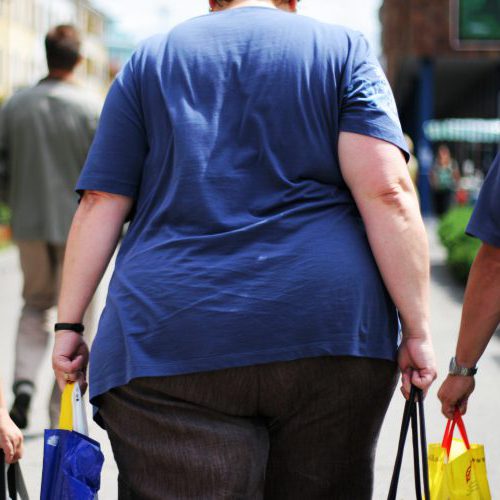
Published:
Last Updated:

The United States spends more on health care than any other country, yet ranks just 42nd in life expectancy. Health care expenditure per capita in the United states reached $9,990 in 2015, more than double the expenditure in Japan, which has the longest life expectancy of any nation.
Despite world-leading health spending, diseases such as diabetes and obesity are more widespread in the United States than ever. However, health outcomes are not uniform across the country. Populations of some states are far less healthy than others. Similarly, populations of some cities within a state are also less healthy. For example, the premature death rate — the number of people who die before age 75 — is 565 per 100,000 residents in Beckley, West Virginia. This is a far greater rate than in San Jose, California where less than 200 people die prematurely per every 100,000 residents.
To identify the least healthy metropolitan area in every state, 24/7 Wall St. reviewed measures of healthy behavior, clinical care, social and economic conditions, physical environment, and other factors in all U.S. metro areas. Included in the index are key measures such as premature mortality, smoking and obesity rates, the share of adults who have no free time for physical activity, and health insurance coverage. Using these measures, we constructed an index that reflects the health of a metro area’s population.
Click here to see the least healthy city in every state.
Click here to see our detailed findings and methodology.

1. Mobile, Alabama
> Premature death rate: 487.2 (per 100,000 residents)
> Adult obesity rate: 37.1%
> Uninsured rate: 13.3%
> Adult smoking rate: 21.6%
Smoking is the leading cause of preventable death in the United States, and in Mobile, Alabama, 21.6% of adults are smokers — the highest share of any metro area in the state. Additionally, about 1 in every 5 metro area residents lack adequate access to fresh, healthy food, either due to proximity or insufficient income — also the highest share of any metro area in the state.
High smoking rates and inadequate access to healthy food each likely contribute to Mobile’s 37.1% obesity rate, the highest in the state and well above the 28.0% U.S. obesity rate.
[in-text-ad]

2. Anchorage, Alaska
> Premature death rate: 342.9 (per 100,000 residents)
> Adult obesity rate: 27.8%
> Uninsured rate: 14.1%
> Adult smoking rate: 15.8%
Nearly 13% of the population in Anchorage, Alaska is food insecure, lacking reliable access to nutritious food, either due to an extensive distance to a grocery store, low income or both. Additionally, more than 1 in 5 adults report drinking alcohol excessively, which increases the risk of accidental death and certain preventable diseases.
In addition, 14.1% of the under 65 population in Anchorage is uninsured, significantly higher than the national rate of 10.3%. This may be lead to less access to primary care providers and preventive care.

3. Lake Havasu City-Kingman, Arizona
> Premature death rate: 501.7 (per 100,000 residents)
> Adult obesity rate: 29.6%
> Uninsured rate: 14.8%
> Adult smoking rate: 18.8%
Smoking is less common in Arizona than it is nationwide. Only 14.0% of adults in the state are smokers compared to 18.0% of American adults. Lake Havasu City-Kingman is one of only two metro areas in the state with a smoking rate above the comparable U.S. figure, and at 18.8%, it has the highest smoking rate in the state.
Unhealthy habits in Lake Havasu do not stop at smoking. Some 30.2% of area adults are never physically active in their leisure time, the highest share of any metro area in the state and well above the 19.4% share of adults across Arizona. Physical inactivity increases the risk of cardiovascular diseases, cancer, diabetes, as well as death.
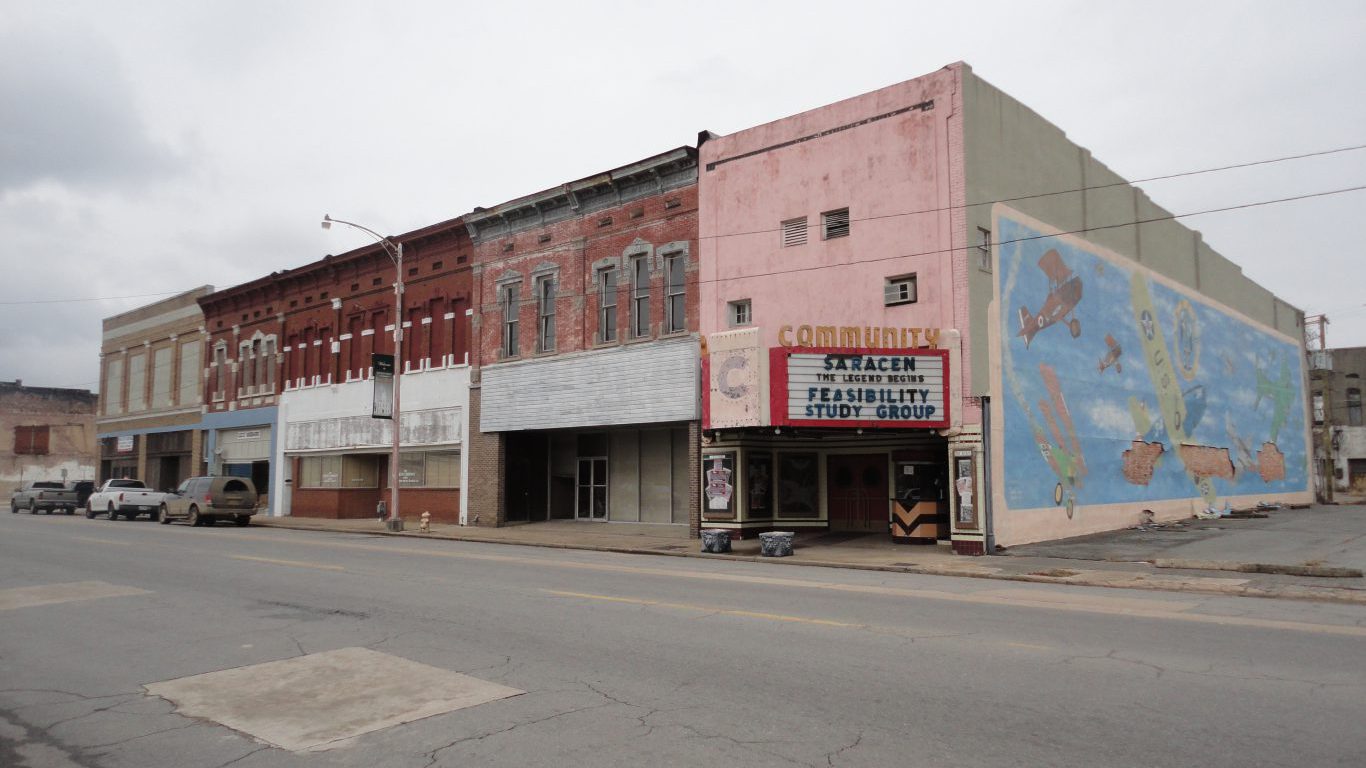
4. Pine Bluff, Arkansas
> Premature death rate: 524.4 (per 100,000 residents)
> Adult obesity rate: 39.8%
> Uninsured rate: 9.7%
> Adult smoking rate: 21.4%
Of the six metros in Arkansas, Pine Bluff is by far the least healthy. The metro’s obesity rate of nearly 40% is alarmingly above the national rate of 28%, and 1 and 4 people are food insecure.
Reproductive health is also of concern in this city. The rate of chlamydia, a sexually transmitted disease, is by far the highest of cities in the state. In Pine Bluff, 1,020 people per every 100,000 residents have the sexually transmitted disease, almost double the state rate of 527 per 100,000, and well over double the U.S. rate of 456 per 100,000.
[in-text-ad-2]

5. Bakersfield, California
> Premature death rate: 389.5 (per 100,000 residents)
> Adult obesity rate: 30.3%
> Uninsured rate: 9.2%
> Adult smoking rate: 14.6%
Adjusting for the population, the Bakersfield metro area has considerably fewer medical professionals than is typical in the state. This may make it more difficult for residents to seek out necessary treatment. There are only about 5 dentists and 17 mental health providers for every 100,000 area residents, well below the respective statewide presence of 80 dentists and 289 mental health providers per 100,000 residents.
Area adults are also less likely to exercise and more likely to be obese than is typical across the state.

6. Pueblo, Colorado
> Premature death rate: 406.6 (per 100,000 residents)
> Adult obesity rate: 25.9%
> Uninsured rate: 8.1%
> Adult smoking rate: 15.9%
The adult obesity rate in Pueblo, Colorado of nearly 26% is the highest of any metro area in the state. The metro area also has the highest percentage of adults who are physically inactive. The city also reports about 391 preventable hospitalizations per 1,000 Medicare enrollees, the second highest share of any metro area in Colorado. Preventable hospitalizations are often of conditions that could have been treated with better outpatient care. Pueblo has the third lowest share of primary care physicians per 100,000 residents of any metro area in the state.
[in-text-ad]

7. New Haven-Milford, Connecticut
> Premature death rate: 291.9 (per 100,000 residents)
> Adult obesity rate: 26.5%
> Uninsured rate: 7.1%
> Adult smoking rate: 13.7%
Connecticut has the second lowest premature death rate of any state, at 266 deaths before age 75 for every 100,000 people. Even in New Haven, the least healthy metro area in the state, there are 292 premature deaths for every 100,000 residents, well below the U.S. premature death rate of 333 per 100,000. Similarly, Connecticut’s 13.5% adult smoking rate is the third lowest of all states. In New Haven, too, some 13.7% of adults are smokers, a considerably smaller share than the 18.0% U.S. smoking rate.
New Haven is not healthier than the United States in every measure of behaviors and outcomes. There are 461 confirmed cases of chlamydia in the metro area for every 100,000 residents, compared to 372 cases statewide and 456 cases nationwide per 100,000 people.
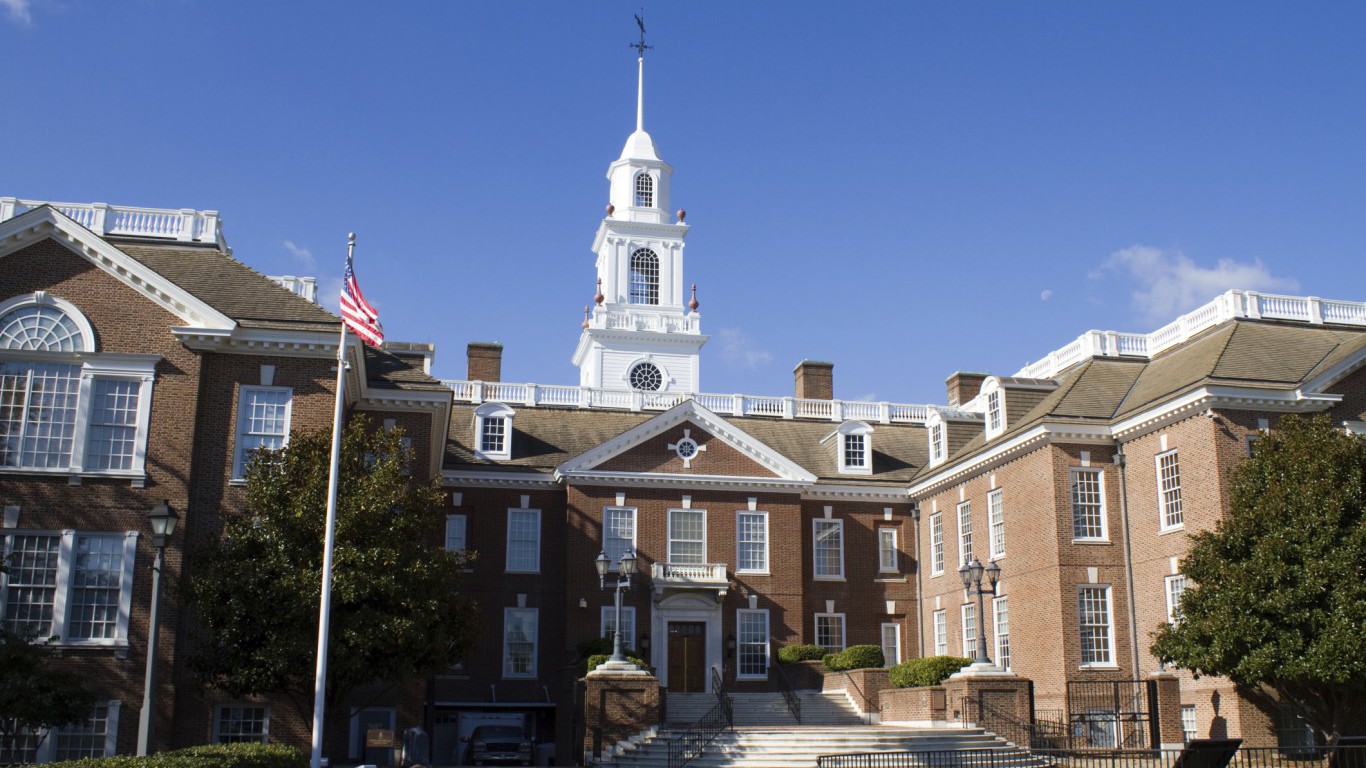
8. Dover, Delaware
> Premature death rate: 389.6 (per 100,000 residents)
> Adult obesity rate: 32.8%
> Uninsured rate: 6.9%
> Adult smoking rate: 19.0%
Dover is the only large metro area in Delaware. Therefore, by default, Dover is classified as the least healthy. The smoking rate in Dover of 19.0% is just above the nationwide rate of 18.0% and the statewide rate of 17.4%. Smoking can lead to many ailments, including cardiovascular and respiratory diseases, and cancer. In addition to the above-average smoking rate, Dover’s obesity rate falls well above both the state and nationwide rates.

9. Panama City, Florida
> Premature death rate: 460.1 (per 100,000 residents)
> Adult obesity rate: 30.0%
> Uninsured rate: 14.7%
> Adult smoking rate: 17.7%
There are 460 deaths before age 75 for every 100,000 people annually in Panama City, the highest premature death rate of any of Florida’s 22 metropolitan areas. A high premature death rate is likely attributable in part to unhealthy behaviors of city residents. Some 17.7% of area adults smoke compared to 15.8% of Florida adults. Additionally, some 27.5% of adults in the Panama City metro area lead completely sedentary lives, more than the statewide inactivity rate of 23.1%.
[in-text-ad-2]

10. Albany, Georgia
> Premature death rate: 494.2 (per 100,000 residents)
> Adult obesity rate: 33.8%
> Uninsured rate: 16.8%
> Adult smoking rate: 20.0%
In Albany, Georgia, 22.4% of adults report being in fair or poor health, the highest percentage of any metro area in the state. This is well above the 17.5% share of state adults and 15.0% share of nationwide adults who report similar health. This could be, at least in part, due to the fact that high shares of the population smoke, are food insecure, and do not have access to recreational centers.
Also, 37% of children in Albany live in poverty, the highest child poverty rate of any metro area in the state and drastically higher than the national child poverty rate of 21%. Those who are impoverished typically have difficulty affording healthier foods and health care. Bad dietary habits learned as a child can lead to health problems later in life, most notably obesity.
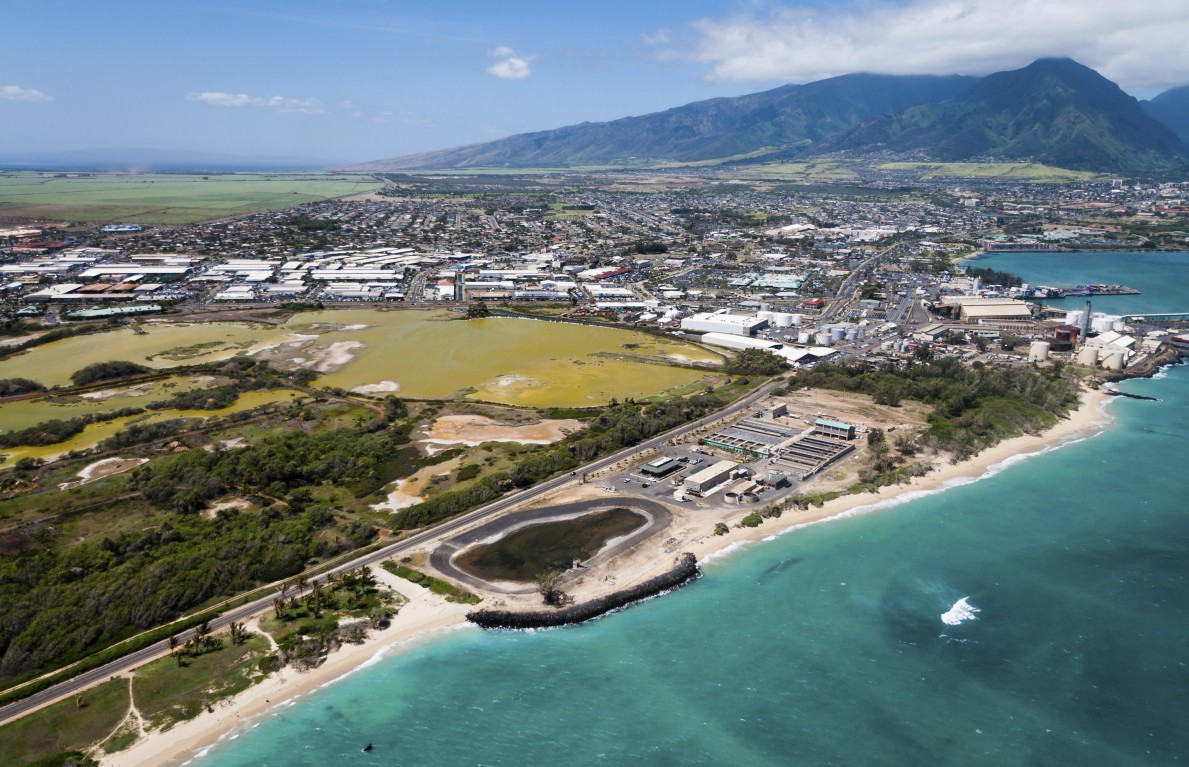
11. Kahului-Wailuku-Lahaina, Hawaii
> Premature death rate: 290.4 (per 100,000 residents)
> Adult obesity rate: 22.4%
> Uninsured rate: 5.6%
> Adult smoking rate: 13.8%
Hawaii is one of the healthiest states in the country, and even Kahului-Wailuku-Lahaina, the least healthy of the state’s two metro areas, is healthier than the nation as a whole by several measures. There are 290 deaths before age 75 annually for every 100,000 Kahului-Wailuku-Lahaina residents, slightly higher than the statewide premature death rate of 278 per 100,000 people but well below the nationwide rate of 333 per 100,000. Similarly, 22.4% of metro area adults are obese, roughly in line with the statewide obesity rate and well below the 28.0% of American adults.
[in-text-ad]

12. Pocatello, Idaho
> Premature death rate: 389.3 (per 100,000 residents)
> Adult obesity rate: 28.1%
> Uninsured rate: 12.8%
> Adult smoking rate: 15.3%
There are nearly 390 deaths before age 75 per every 100,000 people in Pocatello, Idaho, the highest premature death rate of any metro area in Idaho and well above the national rate of 333 per 100,000 and the state rate of 310 per 100,000. The city’s obesity rate is inline with the state and national rates.
Pocatello also has the highest share of people under 65 who are uninsured in comparison to all of the other metro areas in the state and nearly 3 percentage points above the national uninsured rate. This may be indicative of less access to primary care providers and, as a result, less preventive care.

13. Danville, Illinois
> Premature death rate: 466.4 (per 100,000 residents)
> Adult obesity rate: 35.4%
> Uninsured rate: 6.2%
> Adult smoking rate: 17.6%
Some 26.7% of adults in the Danville metro do not get any physical exercise throughout the day beyond getting up and going to work, the highest inactivity rate of any metro area in Illinois. Exercise can be a critical component of maintaining a healthy lifestyle, reducing risk of diseases, and maintaining a healthy weight. The lack of exercise appears to be taking a toll on Danville residents. Some 35.4% of area adults are obese, the largest share of any metro area in the state and well above the 27.3% share of adults statewide.
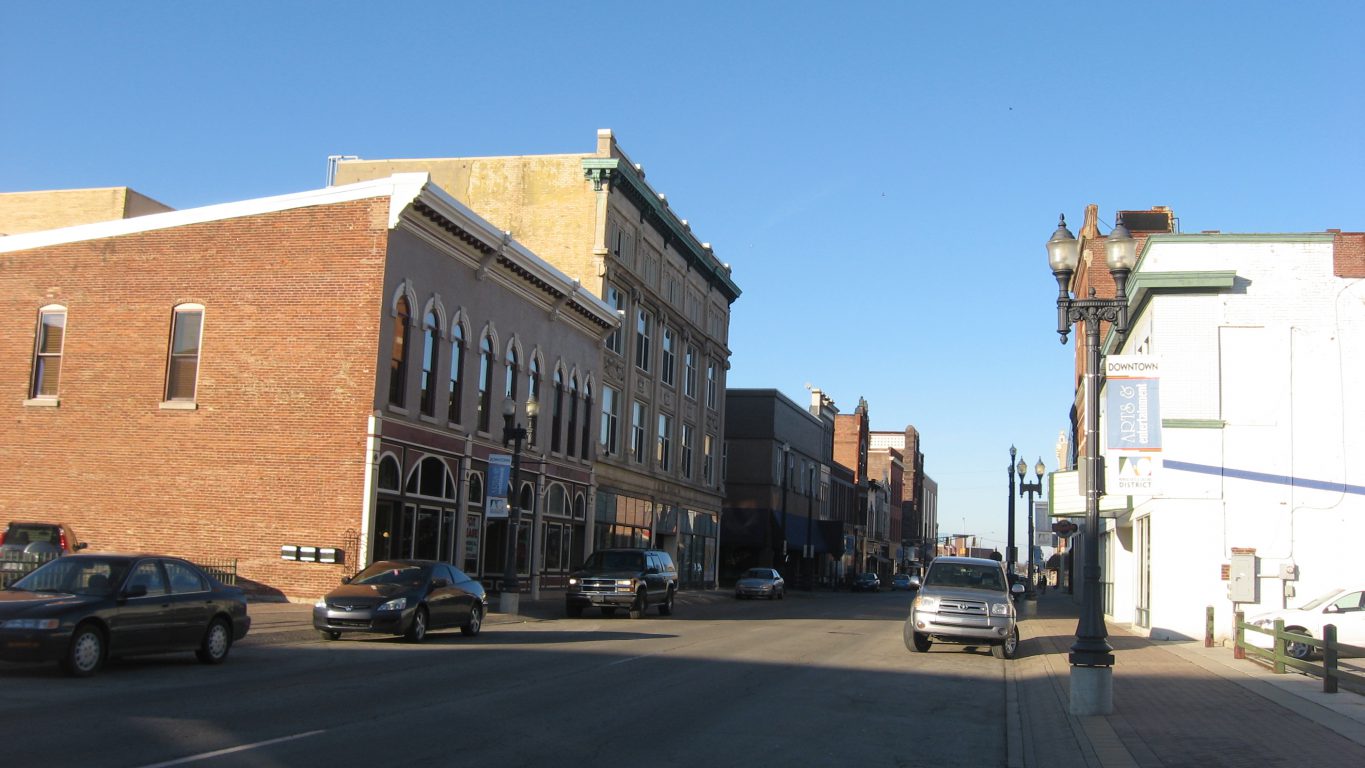
14. Muncie, Indiana
> Premature death rate: 441.8 (per 100,000 residents)
> Adult obesity rate: 31.5%
> Uninsured rate: 10.8%
> Adult smoking rate: 21.0%
Muncie has the highest percentage of adult smokers of any metro area in Indiana, at 21.0%, or 3 percentage points above the national adult smoking rate. Nearly 30% of Muncie’s adult population report they have no leisure time for physical activity, the highest share of any metro area in the state. Additionally, the city has the largest share of the population in the state that is food insecure, which points to at an absence of nutritious, fresh food due to lack of proximity and insufficient income.
[in-text-ad-2]
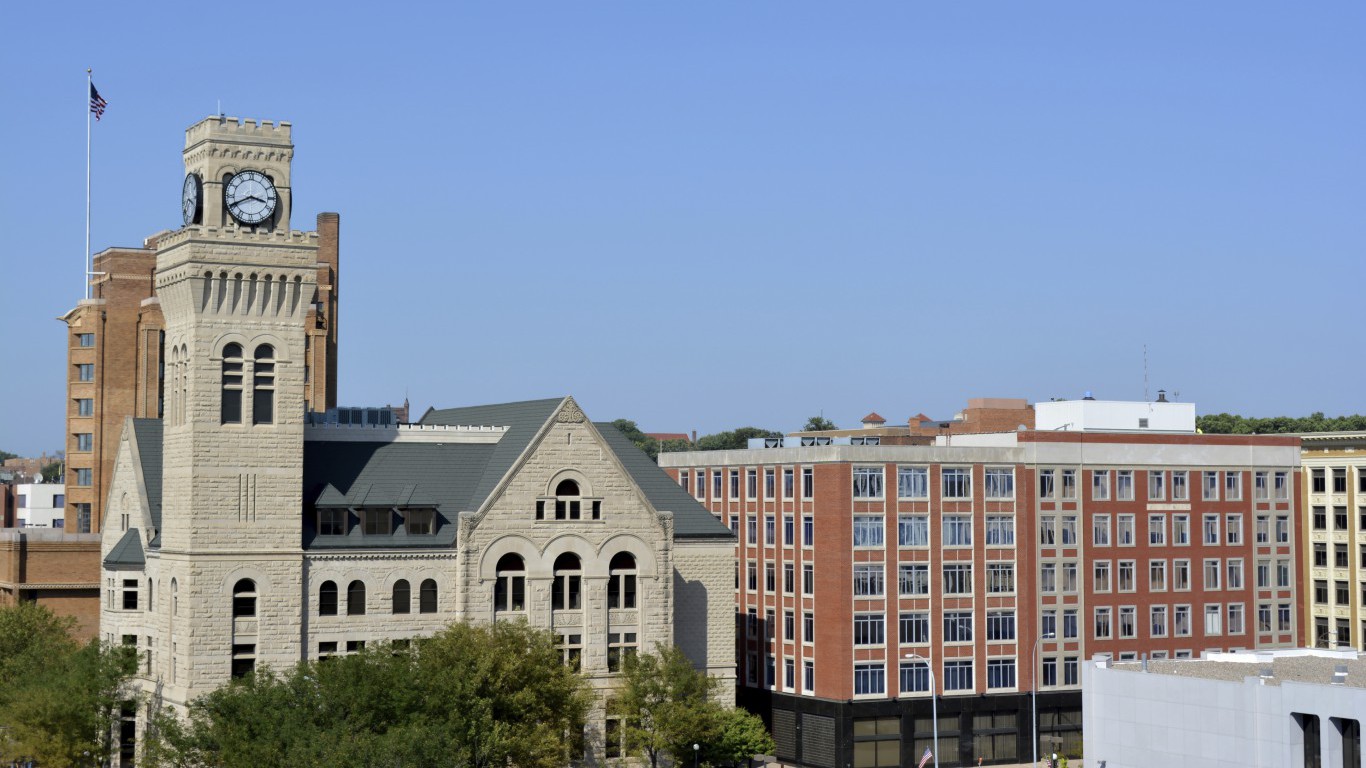
15. Sioux City, Iowa
> Premature death rate: 349.6 (per 100,000 residents)
> Adult obesity rate: 34.3%
> Uninsured rate: 8.1%
> Adult smoking rate: 17.7%
Though it ranks as the least healthy of Iowa’s eight metro areas, Sioux City is relatively healthy compared to the nation as a whole. Only 17.7% of area adults are smokers, the highest adult smoking rate in Iowa but slightly below the 18.0% share of adults nationwide. Healthier behaviors across a population tend to line up with better outcomes. In Sioux City, only 13.9% of adults report being in fair or poor health, the largest share in Iowa but lower than the 15.0% share of adults nationwide.

16. Topeka, Kansas
> Premature death rate: 378.7 (per 100,000 residents)
> Adult obesity rate: 32.9%
> Uninsured rate: 7.9%
> Adult smoking rate: 18.5%
Perhaps the two most significant contributors to Topeka’s unhealthy status is the adult obesity and smoking rates — both of which are known to increase the risk of several diseases and death. Nearly 33% of Topeka’s adult population is obese, well above the nationwide obesity rate of 28% and just slightly above the statewide rate of roughly 31%. The adult smoking rate, on the other hand, is in line with the national and state rates but relatively high among the state’s other metro areas, with two of the four clocking in at 15.4% and 15.8%.
[in-text-ad]

17. Bowling Green, Kentucky
> Premature death rate: 421.6 (per 100,000 residents)
> Adult obesity rate: 32.0%
> Uninsured rate: 7.3%
> Adult smoking rate: 21.0%
About 1 in 5 adults in Bowling Green report being in fair or poor health, the largest share of any Kentucky metro area and considerably more than the 15% share of adults nationwide. Poor health outcomes are often the result of unhealthy behavior, and many in Bowling Green have some unhealthy habits. Some 21% of area adults are smokers and 27% get no physical exercise beyond getting up and going to work — each the highest such shares of any metro area in the state.
Physical inactivity may be partially attributable to a lack of amenities in the area. Only about half of Bowling Green residents have access to areas for physical activity — like parks and recreation centers — a far smaller share than the 84% share of Americans nationwide.

18. Hammond, Louisiana
> Premature death rate: 489.0 (per 100,000 residents)
> Adult obesity rate: 39.1%
> Uninsured rate: 14.1%
> Adult smoking rate: 21.5%
Louisiana has the third highest adult obesity rate of all 50 states. In Hammond, the least healthy city in the state, the adult obesity rate is the highest of any of the state’s metro areas and one of the highest of U.S. metro areas. The adult smoking rate in Hammond is also quite high in comparison to the national rate of 18.0%, but actually falls just below the state rate of 21.9%.

19. Lewiston-Auburn, Maine
> Premature death rate: 348.6 (per 100,000 residents)
> Adult obesity rate: 33.2%
> Uninsured rate: 9.4%
> Adult smoking rate: 18.3%
Maine residents tend to be relatively healthy, and even in the least healthy in the state — the Lewiston-Auburn metro area — some measures of health outcomes and behaviors are in line with nationwide figures. For example, there are 349 deaths before age 75 per 100,000 people in Lewiston compared a national premature death rate of 333 per 100,000. Smoking is the leading cause of premature death in the United States, and 18.3% of area adults are smokers compared to 18.0% of adults nationwide.
[in-text-ad-2]

20. Cumberland, Maryland
> Premature death rate: 396.3 (per 100,000 residents)
> Adult obesity rate: 32.9%
> Uninsured rate: 6.8%
> Adult smoking rate: 19.0%
Cumberland’s adult obesity rate of 32.9% is one of the highest of Maryland’s metro areas. This could be partially the result of relatively high food insecurity and high inactivity rate among the city’s population. Some 14.5% of residents are food insecure, the highest share of any metro area in the state. In addition, nearly 28% of adult residents report they have no time for exercise, the highest share of any other metro area in Maryland.

21. Springfield, Massachusetts
> Premature death rate: 316.5 (per 100,000 residents)
> Adult obesity rate: 25.3%
> Uninsured rate: 3.5%
> Adult smoking rate: 17.4%
Nationwide, 15.0% of adults report being in fair or poor health. In Springfield, 16.8% of adults are in fair or poor health — the only metro area in Massachusetts where a higher share of adults report having suboptimal health than is typical nationwide.
Poor health outcomes are attributable in part to unhealthy behaviors. Some 17.4% of adults in Springfield are smokers and 22.3% lead physically sedentary lives, each the highest rate of any metro area in the state.
[in-text-ad]

22. Flint, Michigan
> Premature death rate: 454.7 (per 100,000 residents)
> Adult obesity rate: 33.0%
> Uninsured rate: 6.4%
> Adult smoking rate: 21.7%
While Michigan has the 24th highest overall rate of chlamydia, roughly in line with the national rate, in Flint nearly 714 per every 100,000 people are diagnosed with the sexually transmitted disease. Widespread sexually transmitted diseases can point to poor public health education and preventative care.
The obesity rate in Flint is also considerably high, at 33.0%. Nationwide, 28.0% of the adult population is obese, and in Michigan 31.4% of adults are, the 11th highest rate of of all states.
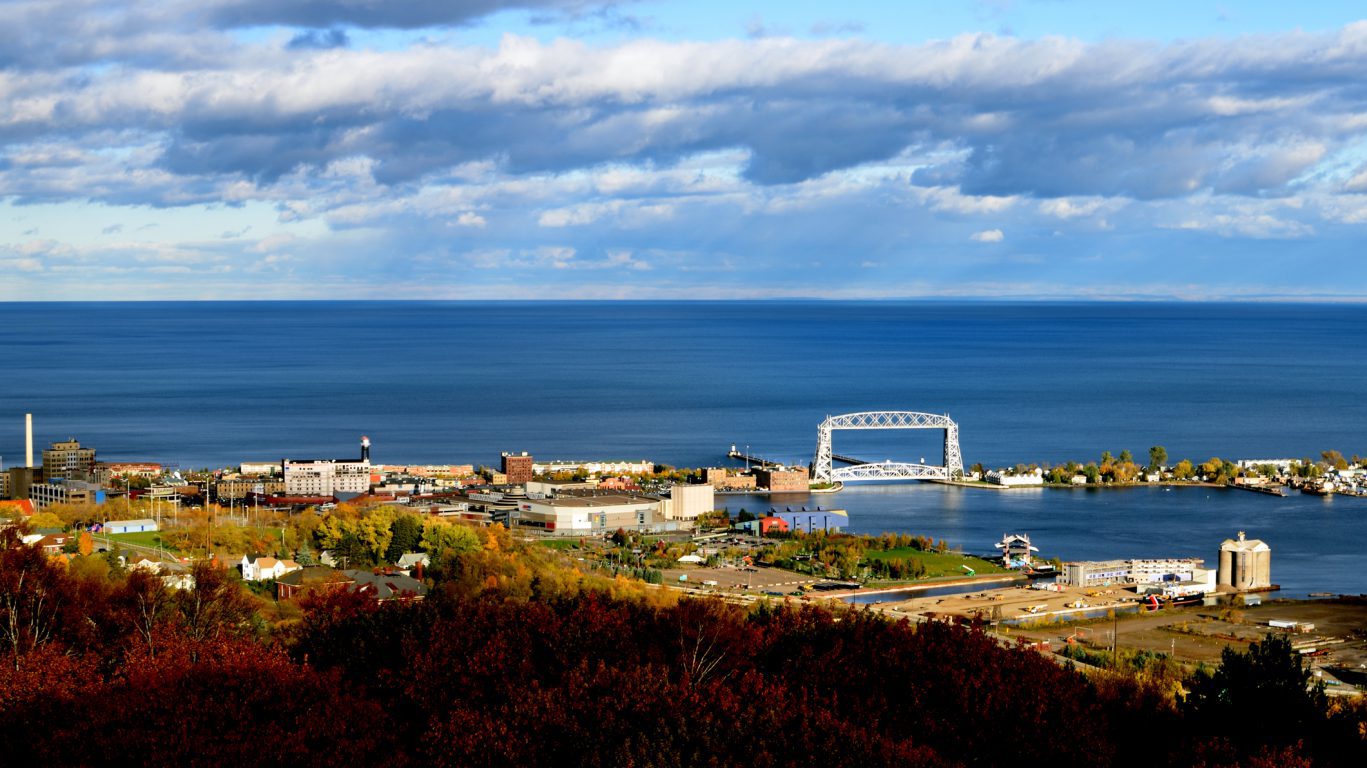
23. Duluth, Minnesota
> Premature death rate: 336.4 (per 100,000 residents)
> Adult obesity rate: 28.3%
> Uninsured rate: 4.7%
> Adult smoking rate: 18.0%
Minnesota is a relatively healthy state, and even Duluth, Minnesota’s least healthy metro area, ranks in line with the nation as a whole in a number of health behaviors and outcomes. For example, 18.0% of adults in Duluth are smokers and 28.3% are obese — compared to 18.0% and 28.0% nationwide, respectively.
Obesity and smoking are both risk factors for premature death, and in Duluth, there are 336 deaths before age 75 for every 100,000 residents compared to 333 premature deaths per 100,000 Americans nationwide.

24. Hattiesburg, Mississippi
> Premature death rate: 481.6 (per 100,000 residents)
> Adult obesity rate: 34.0%
> Uninsured rate: 15.8%
> Adult smoking rate: 19.3%
Of the three metro areas in Mississippi, Hattiesburg is the least healthy but not by a significant margin. The city certainly has the highest obesity rate of all metro areas in Mississippi. With 34.0% of adult residents reporting a body mass index of 30 or greater– which indicates obesity. Mississippi itself has the highest adult obesity rate of all 50 states at 35.2%.
[in-text-ad-2]
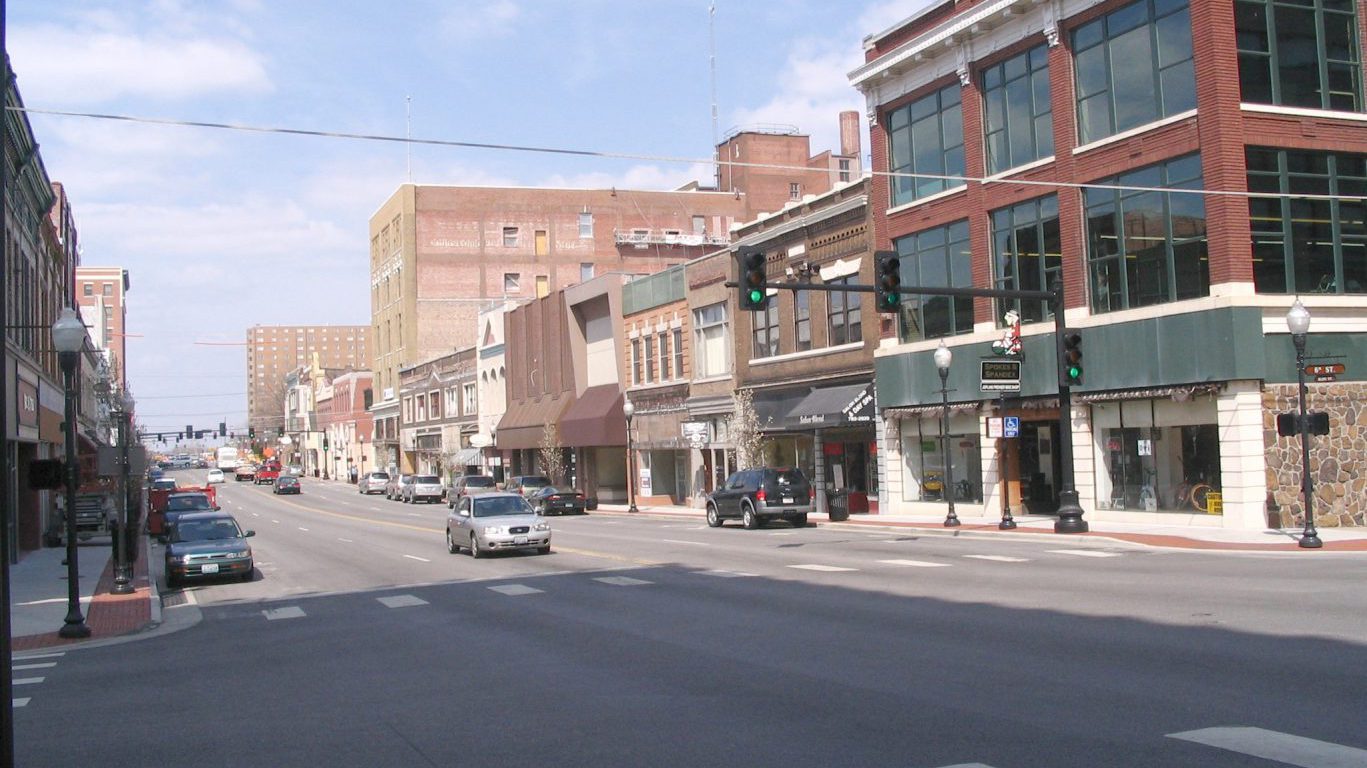
25. Joplin, Missouri
> Premature death rate: 443.7 (per 100,000 residents)
> Adult obesity rate: 33.7%
> Uninsured rate: 14.0%
> Adult smoking rate: 23.1%
At 444 deaths before age 75 for every 100,000 people, Joplin has the highest premature death rate of any of Missouri’s eight metro areas. Most deaths before age 75 are considered preventable, and smoking is the leading cause of preventable death in the United States. In Joplin, 23.1% of adults are smokers, the largest share of any metro area in the state and well above the 18.0% U.S. adult smoking rate.
Obesity is another risk factor of premature death, and Joplin is the only metro area in Missouri where more than 1 in 3 adults are obese.

26. Great Falls, Montana
> Premature death rate: 376.7 (per 100,000 residents)
> Adult obesity rate: 28.2%
> Uninsured rate: 12.5%
> Adult smoking rate: 16.4%
Of the three metro areas in Montana, Great Falls is the unhealthiest. Two factors that likely contribute to the city’s status as least healthy are the premature death and obesity rates. Approximately 377 per every 100,000 people die before the age of 75 in Great Falls, a higher rate than the U.S. rate of 333 per 100,000 and the state rate of about 344 per 100,000.
Great Falls’ obesity rate is roughly in line with the nationwide rate of 28% of adults. However, it is well above the state rate of just 25%.
[in-text-ad]
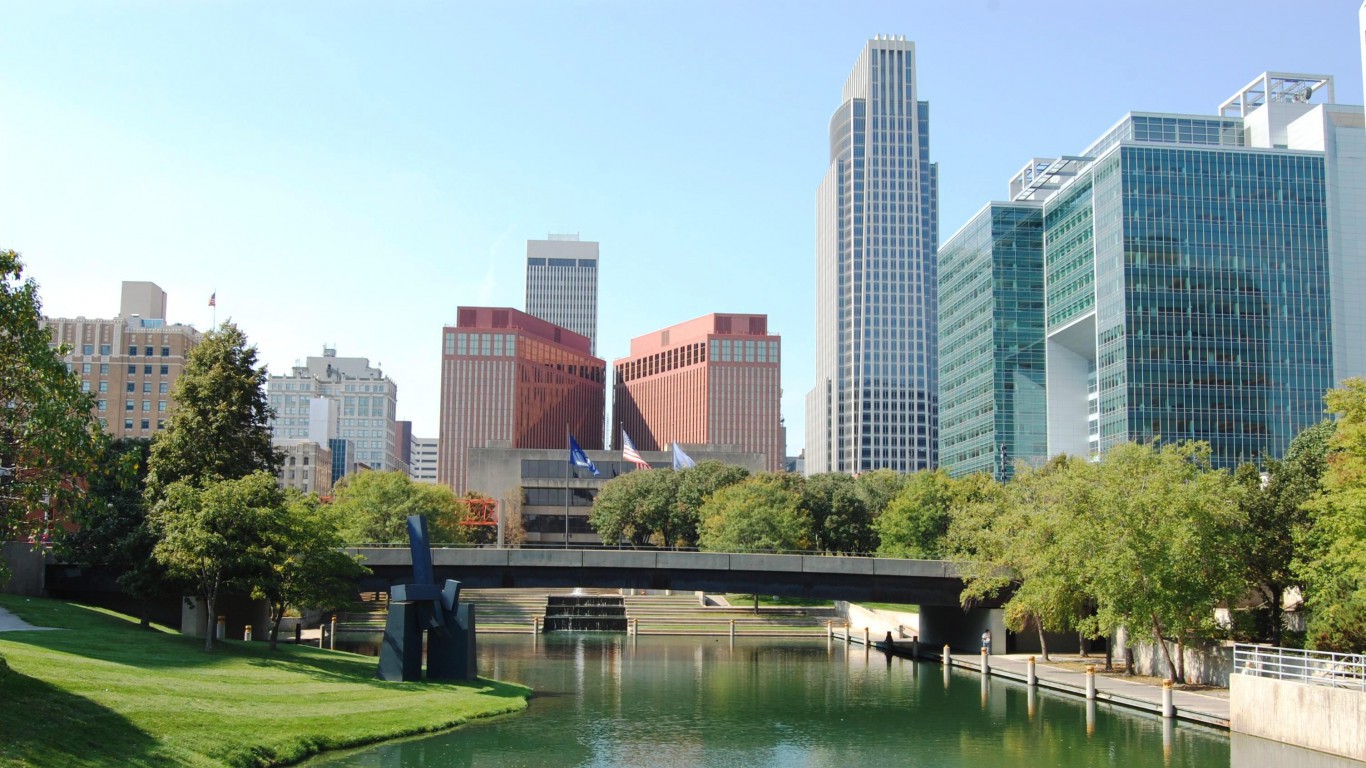
27. Omaha-Council Bluffs, Nebraska
> Premature death rate: 321.8 (per 100,000 residents)
> Adult obesity rate: 29.7%
> Uninsured rate: 8.1%
> Adult smoking rate: 17.0%
Despite ranking as the least healthy of Nebraska’s three metro areas, Omaha-Council Bluffs is healthier than the U.S. as a whole in several measures. For example, about 322 area residents die before age 75 annually, a slightly lower rate than the national premature death rate of 333 per 100,000.
Healthy behaviors contribute to positive health outcomes. Omaha-Council Bluffs residents are less likely to smoke and more likely to lead physically active lives than is typical nationwide.

28. Carson City, Nevada
> Premature death rate: 461.6 (per 100,000 residents)
> Adult obesity rate: 24.6%
> Uninsured rate: 13.0%
> Adult smoking rate: 16.9%
The adult obesity and smoking rates in Carson City are lower than in Nevada’s two other metro areas. However, the rate for premature death, or death before age 75, is much higher than in the other two. About 462 per every 100,000 people die before the age of 75, which is roughly 100 more people per 100,000 than in Las Vegas-Henderson-Paradise or Reno.
But physical well-being is not the only factor that contributes to one’s overall health. The population in Carson City reported an average of 4.2 days a month of feeling mentally unhealthy, which is also the highest share among the state’s metro areas and above the state average of 3.9 days.

29. Manchester-Nashua, New Hampshire
> Premature death rate: 298.1 (per 100,000 residents)
> Adult obesity rate: 28.5%
> Uninsured rate: 7.3%
> Adult smoking rate: 14.6%
Manchester-Nashua is the only city classified as a metro area in New Hampshire and therefore the least healthy by default. In many measures, the metro area performs better than the national measures. For example, the premature death rate in the area is lower than the nationwide rate, and the adult smoking rate is lower than both the nationwide rate of 18.0% and the state rate of 15.9%. However, the city’s adult obesity rate is both above the nationwide rate of 28.0% and the statewide rate of 27.9%.
[in-text-ad-2]

30. Vineland-Bridgeton, New Jersey
> Premature death rate: 425.9 (per 100,000 residents)
> Adult obesity rate: 34.5%
> Uninsured rate: 12.0%
> Adult smoking rate: 19.6%
The percentage of adults with obesity in New Jersey is 25.6%, the 10th lowest of all the states. Vineland-Bridgeton, on the other hand, has the highest adult obesity rate of metro areas in New Jersey, with 34.5% of the adult population being obese. Besides diet, regular exercise is a key factor in managing one’s weight and maintaining a healthy lifestyle. In Vineland-Bridgeton, 28.3% of adults say they do not have time for physical activity, which is nearly 6 percentage points above both the state and national shares of inactive adults.

31. Farmington, New Mexico
> Premature death rate: 400.2 (per 100,000 residents)
> Adult obesity rate: 31.7%
> Uninsured rate: 17.2%
> Adult smoking rate: 20.4%
Nationwide, 18.0% of the adult population smokes. In New Mexico, 17.5% do. In Farmington, the state’s least healthy metro area, 20.4% of adult residents smoke. Additionally, 23.0% of the adult population in Farmington report they do not have time for physical activity, which can lead to higher obesity rates. In Farmington, the adult obesity rate is 3.7 percentage points above the national rate of 28.0%.
[in-text-ad]

32. Elmira, New York
> Premature death rate: 355.5 (per 100,000 residents)
> Adult obesity rate: 29.1%
> Uninsured rate: 6.0%
> Adult smoking rate: 17.9%
Of the many metro areas in New York, Elmira ranks as the least healthy by the smallest of margins over Utica-Rome. Elmira’s adult obesity rate of 29.1% is second highest of the state’s metro areas and nearly 5 percentage points above the statewide rate of 24.6%.
The city has the highest rate of premature deaths — before age 75 — of any other metro area in New York. At 355.5 premature deaths per every 100,000 city residents, Elmira’s premature death rate is also above the national rate of 333.3 per 100,000.

33. Rocky Mount, North Carolina
> Premature death rate: 459.4 (per 100,000 residents)
> Adult obesity rate: 34.9%
> Uninsured rate: 12.8%
> Adult smoking rate: 20.8%
Nationally, 15% of people report they are in fair or poor health. In Rocky Mount, North Carolina, 22.3% of people report being in similar health, the highest share among all metro areas in the state. Perhaps this is due to the fact that Rocky Mount also has the largest percentage of people who are food insecure — lacking access to fresh produce due to distance and low income — as well as the highest percentage of physically inactive people.

34. Bismarck, North Dakota
> Premature death rate: 379.1 (per 100,000 residents)
> Adult obesity rate: 30.3%
> Uninsured rate: 8.5%
> Adult smoking rate: 16.4%
Of the three metro areas in North Dakota, Bismarck is deemed the least healthy by a very slim margin over Grand Forks. The city has the highest rate of people dying before age 75 of all the metro areas in North Dakota, at 379.1 per every 100,000 people. This is well above the state premature death rate of 319.2 per every 100,000.
[in-text-ad-2]

35. Springfield, Ohio
> Premature death rate: 474.8 (per 100,000 residents)
> Adult obesity rate: 31.5%
> Uninsured rate: 6.7%
> Adult smoking rate: 19.5%
In Springfield, 17.3% of adults report being in fair or poor health, the highest percentage of any Ohio city and well above the 15.0% national share and 15.3% state share. Springfield also has the highest premature death rate of any metro area in the state, with 474.8 deaths per every 100,000 people. Nationwide, there are 333.3 premature deaths before the age of 75 per every 100,000 people, and statewide the rate is 382.3 premature deaths per every 100,000 people.

36. Lawton, Oklahoma
> Premature death rate: 467.5 (per 100,000 residents)
> Adult obesity rate: 34.9%
> Uninsured rate: 14.1%
> Adult smoking rate: 22.7%
Lawton has the highest adult obesity rate of any metro area in Oklahoma. Oklahoma has the seventh highest adult obesity rate among the country at 32.7%. People in Oklahoma may be less healthy due to lack of physical activity. In fact, 29.1% of adults in Oklahoma report they are physically inactive, the fifth highest share of all states. In Lawton, 29.9% of adults report they do not have enough time to exercise.
[in-text-ad]

37. Grants Pass, Oregon
> Premature death rate: 418.2 (per 100,000 residents)
> Adult obesity rate: 27.1%
> Uninsured rate: 11.0%
> Adult smoking rate: 19.4%
Out of all the metro areas in Oregon, a relatively healthy state, Grants Pass is the least healthy. The metro area’s adult smoking rate of 19.4% is the highest of all metro areas in the state and above the statewide rate of 17.1%. Perhaps the higher smoking rate contributes to the high premature death rate in the metro area — the highest in the state.

38. Johnstown, Pennsylvania
> Premature death rate: 410.0 (per 100,000 residents)
> Adult obesity rate: 28.9%
> Uninsured rate: 6.3%
> Adult smoking rate: 17.6%
Johnstown is the least healthy city in Pennsylvania by a small margin. Contributing to its ranking, the city has the highest percentage of driving deaths with alcohol involved — 42.6% driving fatalities involved alcohol consumption, which is well above the national average of 30.0% and state average of 32.0%. This may contribute to Johnstown’s high premature death rate of 410 deaths before age 75 per every 100,000 residents.

39. Providence-Warwick, Rhode Island
> Premature death rate: 316.0 (per 100,000 residents)
> Adult obesity rate: 27.5%
> Uninsured rate: 5.6%
> Adult smoking rate: 15.8%
Providence-Warwick is the only metro area of its kind in the tiny state of Rhode Island, so it is the least healthy by default. The city’s adult obesity rate is only slightly higher than the state rate of 27.1%. The percentage of adults who are physically inactive in the city, at 23.7%, is also somewhat greater than the state inactivity rate of 22.9%, even though 93.7% of people in Providence-Warwick have access to a recreational center.
[in-text-ad-2]

40. Florence, South Carolina
> Premature death rate: 510.1 (per 100,000 residents)
> Adult obesity rate: 35.3%
> Uninsured rate: 13.2%
> Adult smoking rate: 20.2%
In Florence, 35.3% of adults are obese, the highest share of all metro areas in South Carolina. The city’s adult obesity rate is also well above the state rate of 31.8% and the nationwide rate of 28.0%. The premature death rate in Florence of 510 deaths before age 75 per every 100,000 people is the highest in all of the metro areas in the state.

41. Sioux Falls, South Dakota
> Premature death rate: 300.5 (per 100,000 residents)
> Adult obesity rate: 28.2%
> Uninsured rate: 8.7%
> Adult smoking rate: 16.1%
Of the two metro areas in South Dakota, Sioux Falls has the highest percentage of adults who report excessive drinking. Otherwise, the city is relatively healthy, with better than national rates nearly across all measures with the exception of obesity. Even the city’s obesity rate is just 0.2 percentage points higher than the national rate.
[in-text-ad]
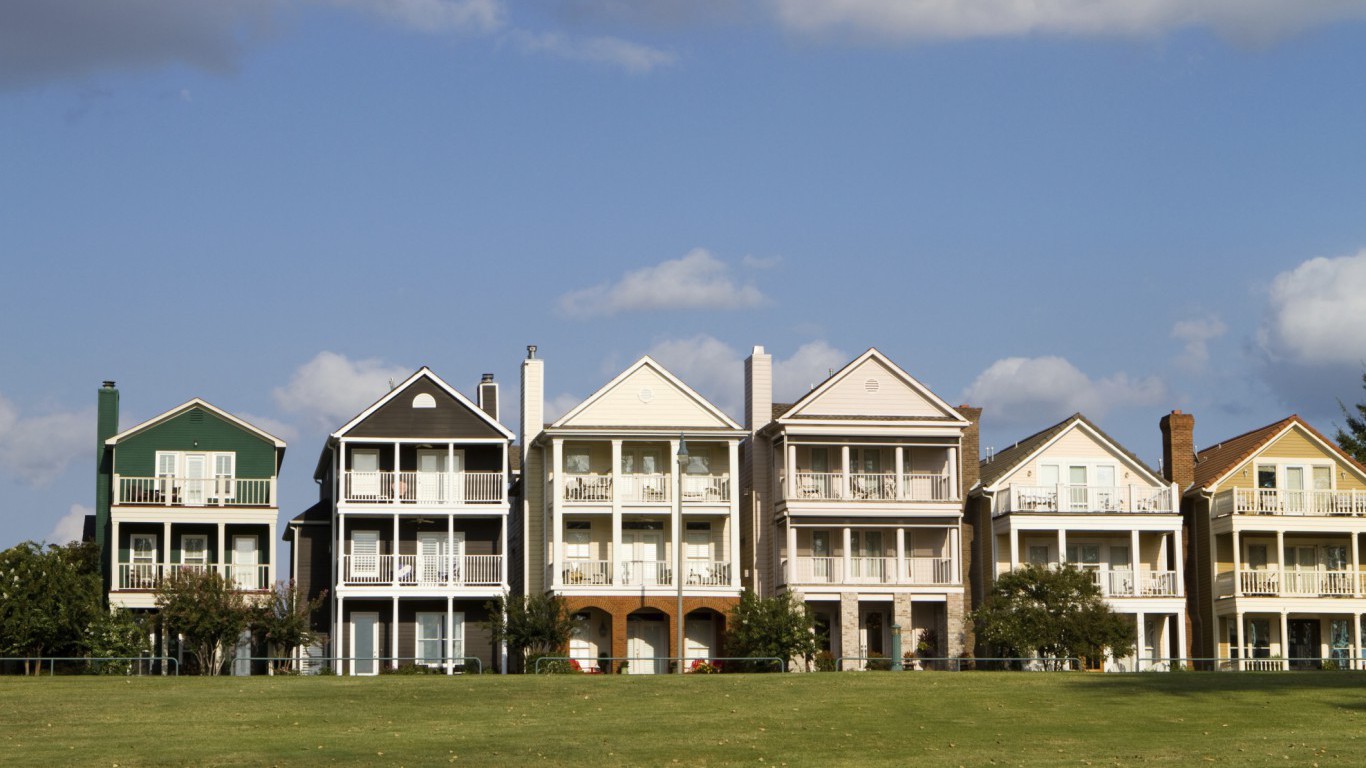
42. Memphis, Tennessee
> Premature death rate: 462.1 (per 100,000 residents)
> Adult obesity rate: 33.7%
> Uninsured rate: 13.6%
> Adult smoking rate: 20.1%
Perhaps one of the reasons Memphis is the least healthy city in Tennessee is due to the high food insecurity rate — 21.1% of the city’s population do not have reliable access to nutritious foods. Food insecurity is caused by the distance to the grocery store being too great, or low income, or both.
In Memphis, the typical household earns less than $50,000 per year, compared to a national median household income of nearly $58,000. The metro area’s high food insecurity is also likely a contributor to the high obesity rate of 33.7% in Memphis– the third highest share in all of the state.

43. Texarkana, Texas
> Premature death rate: 488.1 (per 100,000 residents)
> Adult obesity rate: 33.5%
> Uninsured rate: 17.4%
> Adult smoking rate: 18.2%
The national obesity rate is 28.0%. In Texarkana, the obesity rate is 33.5%, the second highest rate of all the 25 metro areas in the state. The smoking rate in Texarkana of 18.2% is the second highest among other metro areas in the state and well above the state adult smoking rate of 15.2%. Additionally, 19.8% of the city’s adult population reports that they are of fair or poor health — nearly 5 percentage points above the national average of 15.0%.

44. Salt Lake City, Utah
> Premature death rate: 306.5 (per 100,000 residents)
> Adult obesity rate: 25.7%
> Uninsured rate: 11.9%
> Adult smoking rate: 9.3%
Salt Lake City is the least healthy metro area in Utah, a relatively healthy state. The city generally rates well in health measures than the national averages. For example, only 12.7% of adults report being in fair or poor health compared to the 15.0% who do nationwide. In addition, the city’s obesity rate of 25.7% is well below the national rate of 28.0% and nearly in line with the state obesity rate of 25.4%.
The smoking rate is exceptionally low in Salt Lake City and Utah in general. The percentage of adults who smoke in Salt Lake City is just 9.3%, the lowest share of any U.S. metro area.
[in-text-ad-2]

45. Burlington-South Burlington, Vermont
> Premature death rate: 279.8 (per 100,000 residents)
> Adult obesity rate: 21.8%
> Uninsured rate: 3.6%
> Adult smoking rate: 13.4%
Burlington-South Burlington is the only metro area in Vermont. While it’s classified as least healthy by default, this city is certainly not unhealthy, measuring better than national averages in many factors. Only 9.1% of the population reports feeling in fair or poor health, well below the national average of 15.0%.
In Vermont as a whole, only 11.4% of the population report being of fair or poor health. That’s less than half the rate in West Virginia — the state the highest share of the population reporting fair or poor health, at nearly 24.0%.

46. Lynchburg, Virginia
> Premature death rate: 394.7 (per 100,000 residents)
> Adult obesity rate: 30.2%
> Uninsured rate: 12.0%
> Adult smoking rate: 17.3%
Nationwide, the premature death rate is 333.3 deaths per every 100,000 people. In Lynchburg, the rate is 394.7 per every 100,000 people, well above the national rate as well as above the state rate of 313.8 deaths per every 100,000 people.
The percentage of people under 65 who are uninsured — 12.0% — also may contribute to more deaths before the age 75, because without health insurance people may not be able to visit their primary care provider regularly and — therefore — will more likely not receive preventive care. For perspective, the national average of people uninsured below age 65 is 10.3%.
[in-text-ad]

47. Yakima, Washington
> Premature death rate: 349.1 (per 100,000 residents)
> Adult obesity rate: 29.6%
> Uninsured rate: 16.3%
> Adult smoking rate: 16.9%
Yakima, a relatively healthy city, is the least healthy in Washington state. One factor contributing to its least healthy status is obesity. The obesity rate in Yakima is over 2 percentage points above Washington’s rate. Also, 23.5% of the adult population report they feel their health is fair or poor, which is well above the national share of 15.0%. This is over 7 percentage points higher than the second highest Washington metro area, Kennewick-Richland, with 16.1%
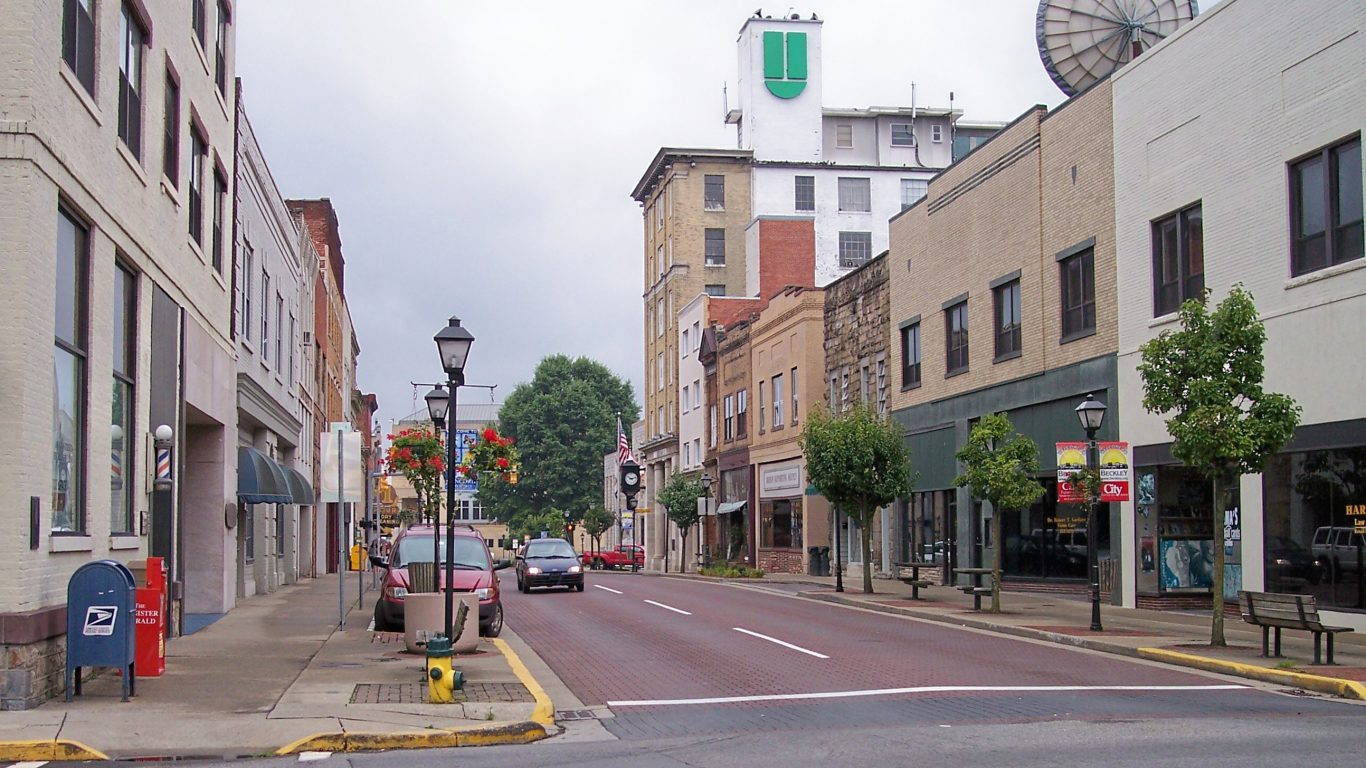
48. Beckley, West Virginia
> Premature death rate: 565.1 (per 100,000 residents)
> Adult obesity rate: 35.6%
> Uninsured rate: 12.9%
> Adult smoking rate: 24.8%
Beckley is arguably one of the least healthy cities nationwide, and West Virginia is the least healthy state. The adult smoking rate in Beckley is 24.8%, which ties with Parkersburg-Vienna for the highest smoking rate of all metro areas in the state.
Like the state as a whole, Beckley has a high adult obesity rate, at 35.6% of the adult population.
Likely contributing to this high rate is the lack of physical activity. In Beckley alone, 31.3% of adults report they have no time for physical activity, which is just slightly above the state average of 29.2%.
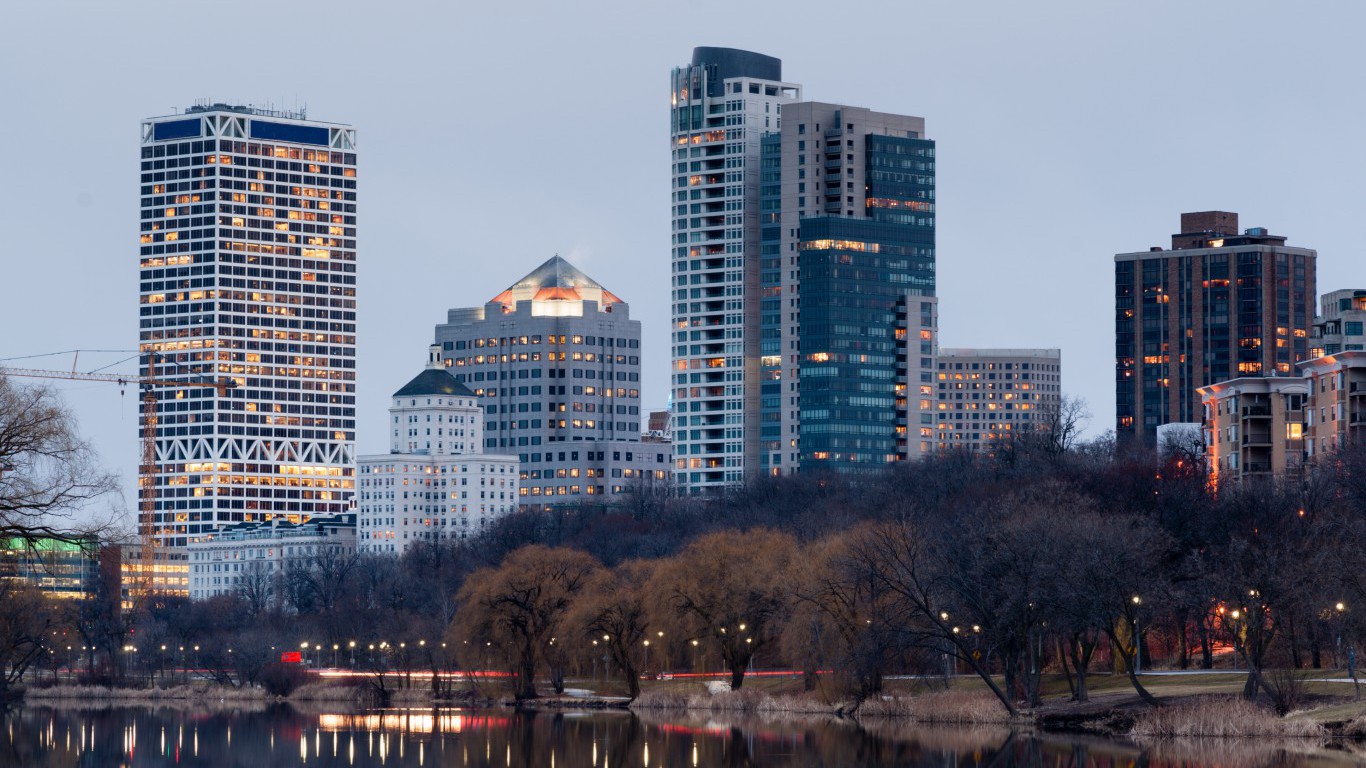
49. Milwaukee-Waukesha-West Allis, Wisconsin
> Premature death rate: 346.7 (per 100,000 residents)
> Adult obesity rate: 30.9%
> Uninsured rate: 6.9%
> Adult smoking rate: 17.8%
Milwaukee-Waukesha-West Allis has the highest share of premature deaths — before age 75 — per every 100,000 people in the state. The metro area’s premature death rate is not that much above the national rate of 333.3 per every 100,000, but it is well above the state rate of 301.0 deaths per every 100,000.
Perhaps the relatively high premature death rate could be related to ailments caused by excess drinking, such as liver failure. Some 22.5% of adults in the city report drinking in excess. Another factor may be the adult obesity rate, which is nearly 3 percentage points above the national rate.
[in-text-ad-2]
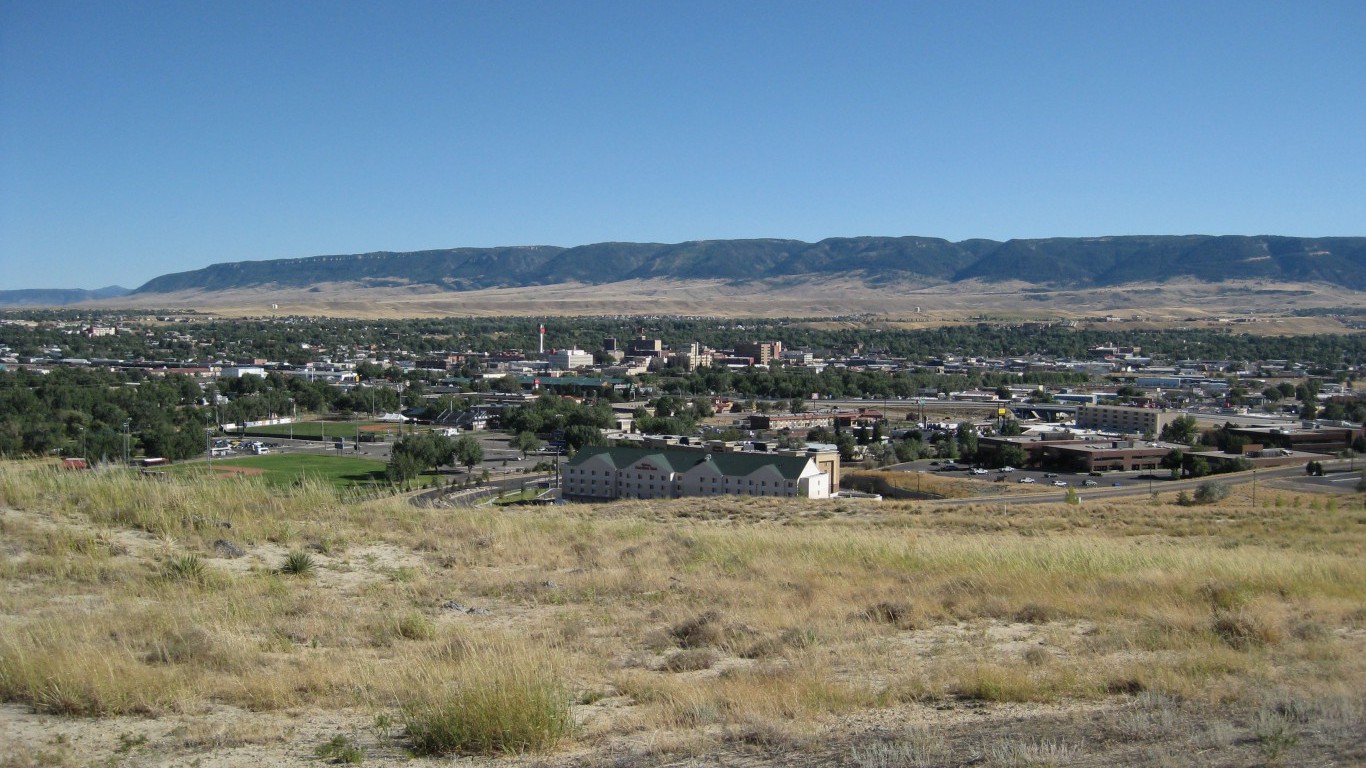
50. Casper, Wyoming
> Premature death rate: 407.7 (per 100,000 residents)
> Adult obesity rate: 29.4%
> Uninsured rate: 17.2%
> Adult smoking rate: 19.2%
Out of Wyoming’s two metro areas, Casper and Cheyenne, Casper has a significantly greater premature death rate of the two, at 407.7 deaths before the age of 75 per 100,000 people compared to a national rate of 333.3. One of the primary causes of deaths before 75 years of age is smoking. Over 19% of the adult population in Casper smokes, compared to a national rate of 18.0%.
Smoking can cause several diseases, including but not limited to heart disease, stroke, diabetes, emphysema, bronchitis, and cancer. According to the Centers for Disease Control and Prevention, people who smoke shorten their lives by about 10 years on average compared to those who do not.
Detailed Findings and Methodology:
In several states, there were only a few metro areas large enough to be compared. In these cases, the distinction of being the least healthy does not have the same implications as in states like California and Texas, where there are more than 20 major metro areas. In four states, there is only one metro area, and in those cases, the one metro area is listed by default.
In states where fewer cities were up for comparison, or in states that tend to be healthier on the whole, the least healthy city often compares favorably to the country as a whole. For example, New Haven, Connecticut ranks as the least healthy metropolitan area in the state. However, Connecticut’s population tends to be very healthy, and even as the least healthy of the state’s four metro areas, New Haven’s smoking, obesity, and premature mortality rates are all better than the national rates.
Smoking and obesity are both behavioral factors that lead to a number of negative health outcomes, including cancer, hypertension, heart disease, and death. These are often preventable diseases and conditions, and metropolitan areas with higher smoking and obesity rates tend to also have high rates of these diseases.
In other cases, populations may suffer from high obesity rates because they do not live near a grocery store with fresh fruits and vegetables, or they cannot afford to buy healthy food, or both. The metro area with the greatest percentage of food insecure people is Pine Bluff, in which 1 in every 4 residents do not have reliable access to nutritious food. The city also has the highest adult obesity rate, at nearly 40%, and the second highest premature death rate of any metro area.
To identify the least healthy city in every state, 24/7 Wall St. created an index modelled after an analysis conducted by County Health Rankings & Roadmaps, a Robert Wood Johnson Foundation and University of Wisconsin Population Health Institute joint program. The index rankings are based on overall health outcomes, a weighted composite of length of life, quality of life, and overall health factors. The health factors component itself is a weighted composite of healthy behaviors, clinical care, social and economic factors, and physical environment measures. All data is for the most recent available year. The index was used to compare all U.S. metropolitan statistical areas as defined by the U.S. Census Bureau. Four states — Delaware, New Hampshire, Rhode Island, and Vermont — have only one metropolitan statistical area. In these states, the sole metro area is listed by default.
Credit card companies are at war, handing out free rewards and benefits to win the best customers. A good cash back card can be worth thousands of dollars a year in free money, not to mention other perks like travel, insurance, and access to fancy lounges. See our top picks for the best credit cards today. You won’t want to miss some of these offers.
Flywheel Publishing has partnered with CardRatings for our coverage of credit card products. Flywheel Publishing and CardRatings may receive a commission from card issuers.
Thank you for reading! Have some feedback for us?
Contact the 24/7 Wall St. editorial team.